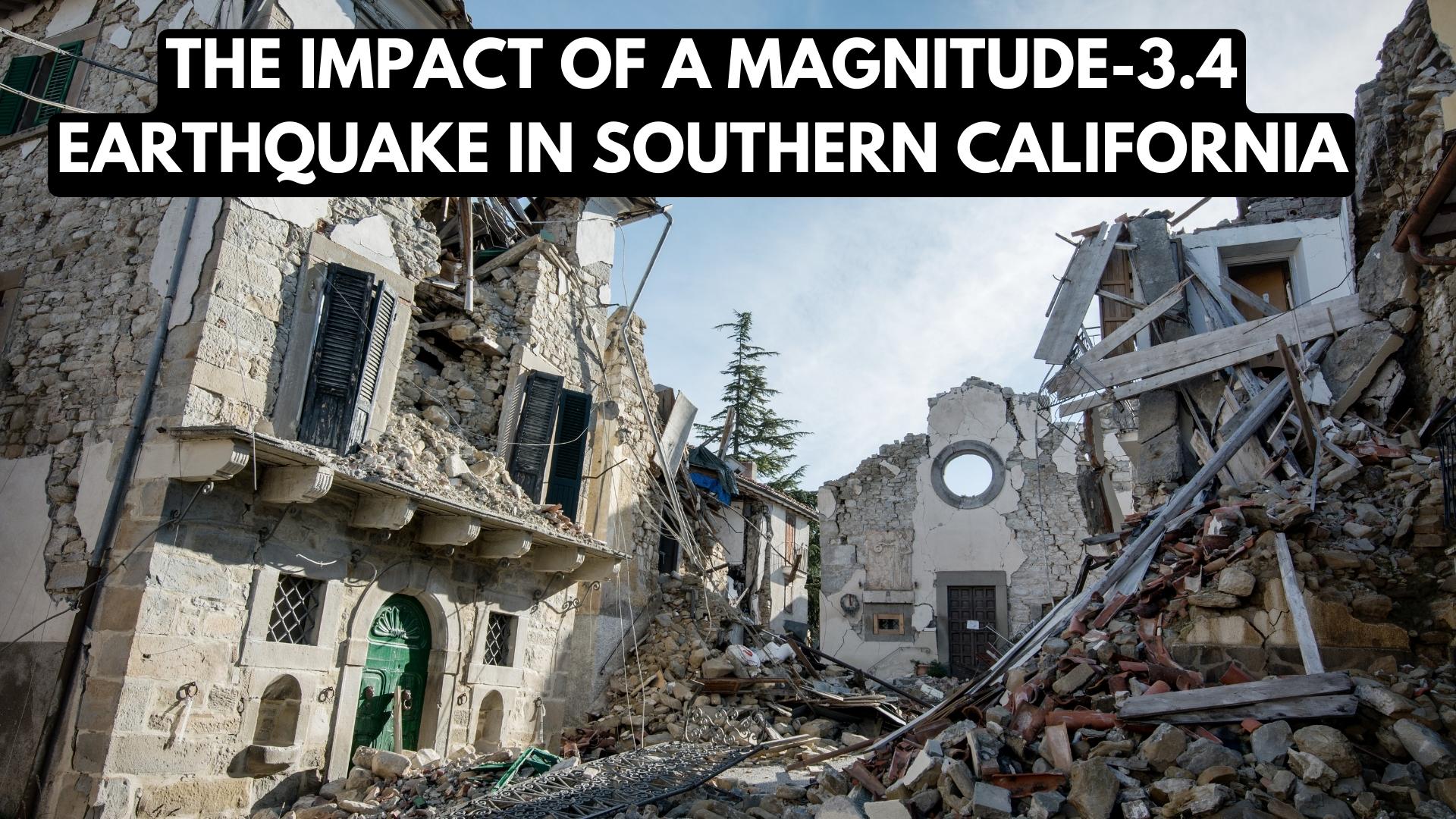Earthquake in Southern California : Southern California was recently rattled by a magnitude-3.4 earthquake, causing a brief moment of panic and concern among residents. The earthquake, which occurred in the Searles Valley area of California, serves as a reminder of the region’s seismic activity. In this article, we will explore the details of the earthquake, its potential implications, and the ongoing efforts to monitor and mitigate seismic risks in Southern California.
Understanding the Magnitude-3.4 Earthquake in Southern California

The magnitude-3.4 earthquake struck the Searles Valley area of the Mojave Desert at 5:03 a.m. local time. Located approximately 11 miles northeast of Ridgecrest in San Bernardino County, the quake occurred at a depth of 6.7 miles. While the earthquake’s magnitude may seem relatively small, it still carried the potential to cause damage or injury.
Fortunately, there have been no immediate reports of any significant damage or injuries resulting from the earthquake. However, it serves as a reminder of the seismic activity that characterizes Southern California.
Seismic Activity in Southern California
Southern California sits on the Pacific Ring of Fire, an area known for its high level of seismic activity. The region is prone to earthquakes due to its location along the boundary between the Pacific and North American tectonic plates. This tectonic interaction creates a complex network of faults, such as the San Andreas Fault, which runs through the region.
The San Andreas Fault is a major fault line that extends approximately 800 miles through California. It is capable of producing large earthquakes, making it a significant concern for residents and officials alike. The fault’s proximity to densely populated areas, including Los Angeles, raises the potential for significant damage and disruption in the event of a major earthquake.
Lessons from Past Earthquakes
The recent magnitude-3.4 earthquake serves as a reminder of the region’s vulnerability to seismic activity. In particular, it brings to mind the series of earthquakes that struck the Ridgecrest and Searles Valley areas in July 2019. The first earthquake, with a magnitude of 6.4, occurred on July 4, followed by a larger magnitude-7.1 earthquake on July 5.
These earthquakes caused significant damage to infrastructure and homes in the affected areas. They also served as a wake-up call for both residents and authorities, highlighting the importance of earthquake preparedness and the need for ongoing monitoring and research.
Next Article: Arion Kurtaj: The Teenage Hacker Behind the Grand Theft Auto VI Hack
Ongoing Monitoring and Mitigation Efforts
In response to the region’s seismic risks, various organizations and agencies are actively monitoring and mitigating earthquake hazards in Southern California. The United States Geological Survey (USGS) plays a crucial role in this regard, providing real-time earthquake monitoring and research.
The USGS operates a network of seismometers that continuously monitor seismic activity in the region. This network allows scientists to detect earthquakes, determine their magnitude, and analyze their potential impact. By studying seismic patterns, experts can gain valuable insights into earthquake behavior and improve their ability to predict and respond to future events.
The Importance of Earthquake Preparedness
While scientists and experts work to monitor and mitigate seismic risks, it is equally important for individuals and communities to be prepared for earthquakes. Earthquake preparedness involves taking proactive steps to ensure personal safety and minimize damage during an earthquake event.
Some essential measures for earthquake preparedness include:
I) Creating an emergency plan: Develop a plan that outlines how to communicate with family members, where to meet after an earthquake, and what to do in various scenarios.
II) Building an emergency kit: Assemble a supply kit that includes essential items such as food, water, medication, flashlights, and a first aid kit.
III) Securing furniture and belongings: Take steps to secure heavy furniture, appliances, and other items that could pose a risk during an earthquake.
IV) Educating yourself and others: Stay informed about earthquake safety procedures and share this knowledge with family members, friends, and neighbors.
Conclusion
The recent magnitude-3.4 earthquake in Southern California serves as a reminder of the region’s seismic activity. While no significant damage or injuries were reported, it underscores the importance of earthquake preparedness and ongoing monitoring efforts. By staying informed, being prepared, and supporting ongoing research, we can work towards minimizing the impact of earthquakes and ensuring the safety of communities in Southern California.
Disclaimer
All the information given in this blog is for your information only and is not used for commercial purposes. Although we do not ensure the accuracy and completeness of this information. We make every possible effort to do so, but there may still be some errors in it. We Will not be held liable in any way for possible damages arising from the use of the article.




